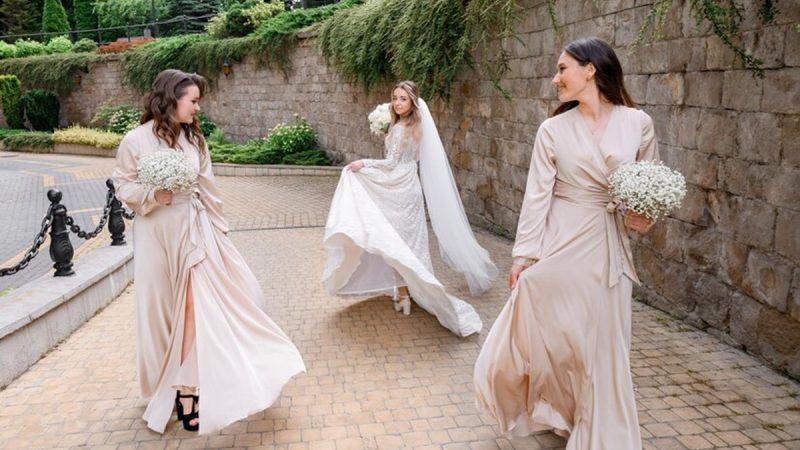Types of wedding dresses

The cut of a dress, especially a wedding dress, refers to the shape that will give it. The most common cut is the “A” line or princess cut, although there are orthoses that the bride can use to improve her figure and create the wedding dress she is looking for. Below we list a series of types of wedding dresses and in which types of women it is advisable to use one or the other in order to find the most flattering wedding dress.
Steps to follow:
Step: 1
Visit a dressmaker’s shop or luxury store to receive professional advice. Ask the dressmaker to evaluate her measurements so that the cuts flatter her figure. They have professional experience and are familiar with different types of dress cuts.
Step: 2
Look at a line of princess-cut dresses, and see if that style flatters your shape. The fit of these dresses is designed to hide a significant abdomen and to elongate the torso, while the skirt conceals your hips. This dress can have a strapless style or can be provided with straps or small sleeves.
Step: 3
Consider the mermaid, trumpet, or fishtail wedding dress if you want a gown that fits close to the body, from the shoulders to the knees. The skirt tends to flare below the knees to allow extra room for leg movement when walking and dancing. The top of the dress often uses a lace effect over the breasts to create a sexy look. This dress looks best on women with a balanced figure.
Step: 4
Choose a wedding dress with a V-neckline if you have large breasts. The top takes a “V” shape and slopes down just before the waist. This elongates the waist and properly supports the breasts. The bell-shaped skirt falls in a straight line outward, contributing to the illusion of a narrow waist and hips.
Step: 5
Select a round-style wedding dress, if you want to see a very wide skirt, with ruffles and decorations. Often a round cut is included with a form-fitting bodice. This can be worn by women with large breasts, although it makes the hips look fuller if the skirt has movement or a lot of decoration. Women with small breasts may feel that the skirt is too heavy and may pull the top down. This can create tension at the top during the wedding and reception.
Step: 6
Choose an empire-cut dress if you are petite and smaller-chested. This cut gathers just below the chest in a classic Roman style. This will tend to make the breasts appear larger. Often the fabric is very soft and drapes well. This type of cut can disguise problem areas on the waist and hips, but it is mainly selected for its simplicity and elegance.
Step: 7
Try a sheath-cut dress if you have an hourglass figure. This cut fits close to the body and shows all the curves of a woman. The dress is often sold with a detachable train allowing the bride to move and dance at the reception. Often the sheaths have lace overlays.
Step: 8
Choose a thinning dress, if it is a slightly chubby bride. The thinning movement gives a better figure and allows many brides to select the cut they like, without noticing stiffness.
Step: 9
The traditional style wedding dress is the one that is tight on the torso and a flared skirt comes out of the waist. It is ideal for fanciful brides who want to look like a princess from a fairy tale on their wedding day.
Step: 10
The A-line wedding dress sits low to the torso and the skirt falls in a slight A-shape. Perfect for brides who want to look elegant.
Step: 11
The wedding dress with the Portrait neckline gives a very elegant and classic cut. It is characterized by the fact that the fabric surrounds the shoulders as if it were a shawl, leaving them slightly visible.
Tips
There are many styles of dresses with interesting and attractive designs. The front of a dress can be demure, while the back can be a little sexy. This setup is often made for the more conservative parent.







